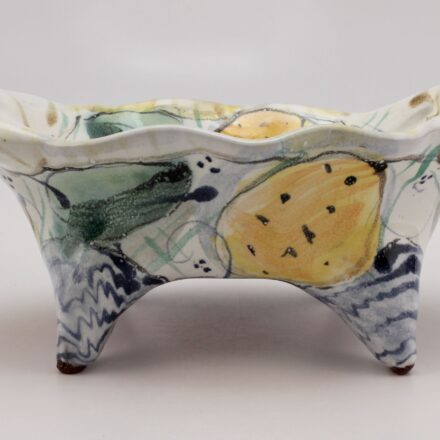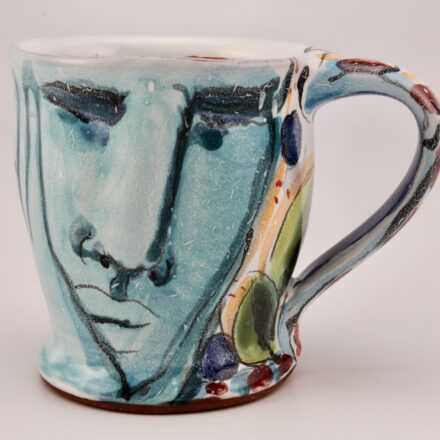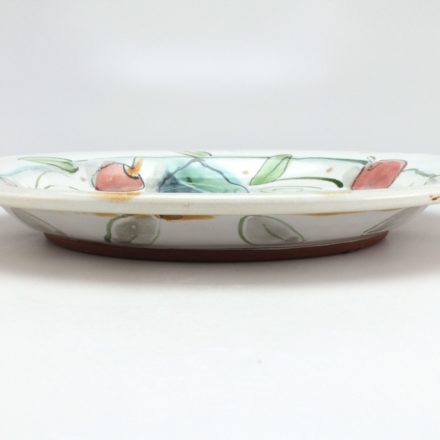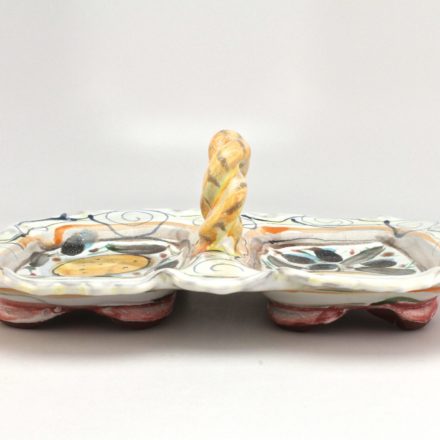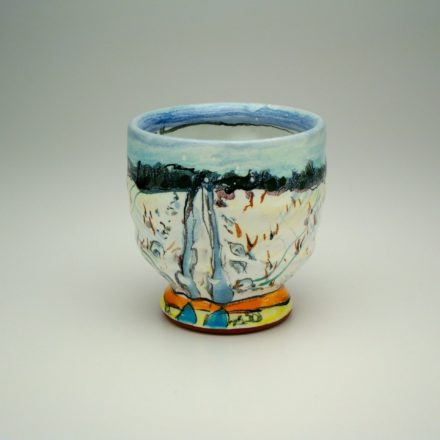- Skip to primary navigation
- Skip to main content
- Skip to pagination
- Skip to footer credits
- Skip to secondary navigation
Contemporary, Functional Ceramic Art Collection
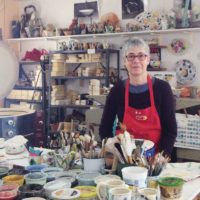
Ann Tubbs
The functional pottery which I now make is done in a mid-range, cone 3 stoneware, made, at the moment, from my mixing of a commercial clay body with a clay body I have formulated, and mix, myself. This clay, fired to a higher temperature than most maiolica, is a dense, less porous clay which bonds well with, and will not cause the maiolica glaze to chip or craze. This higher temperature maiolica is somewhat of an anomaly, since most work of this type is in the lower temperature range, and, though more colorful, is less durable. The pieces, themselves, are formed with the use of the wheel, slab roller, and hand tools, and bisqued to cone 06 before glazing and decorating. The glaze, which I also mix, is a cone 3 white or cream maiolica, and the colorants, mixed with a frit, a gum and a macloid (the Walter Ostrom method), are brushed onto the glaze in its dusty, pre-fired stage. The decoration is a little like working with watercolors on blotter paper. The frit aids with the fusion; the gum, with ease of brush work; the macloid, with suspension. Once decorated, the pieces are then fired in an oxidizing atmosphere in a large, electric kiln, over a period of 17 hours. Cooling takes another day and a half. My son, Peter, for one of his high school projects, planted a large, bricked-path garden near my studio, with interesting flower and vegetable variants, many of which have inspired my decoration. My family and I have also visited both France and Italy (to see a nephew and his family), and more recently, Finland and Russia , where I have done many drawings, and looked at many pots. The clay notebook series is also an outgroth of the gardening, and of more worldly ideas. Made with porcelain or stoneware fired to the bisque temperature, the work is then cold-smoked, and painted and assembled. These are some of the cumulative results of almost thirty years of looking, drawing, and of working in clay.
